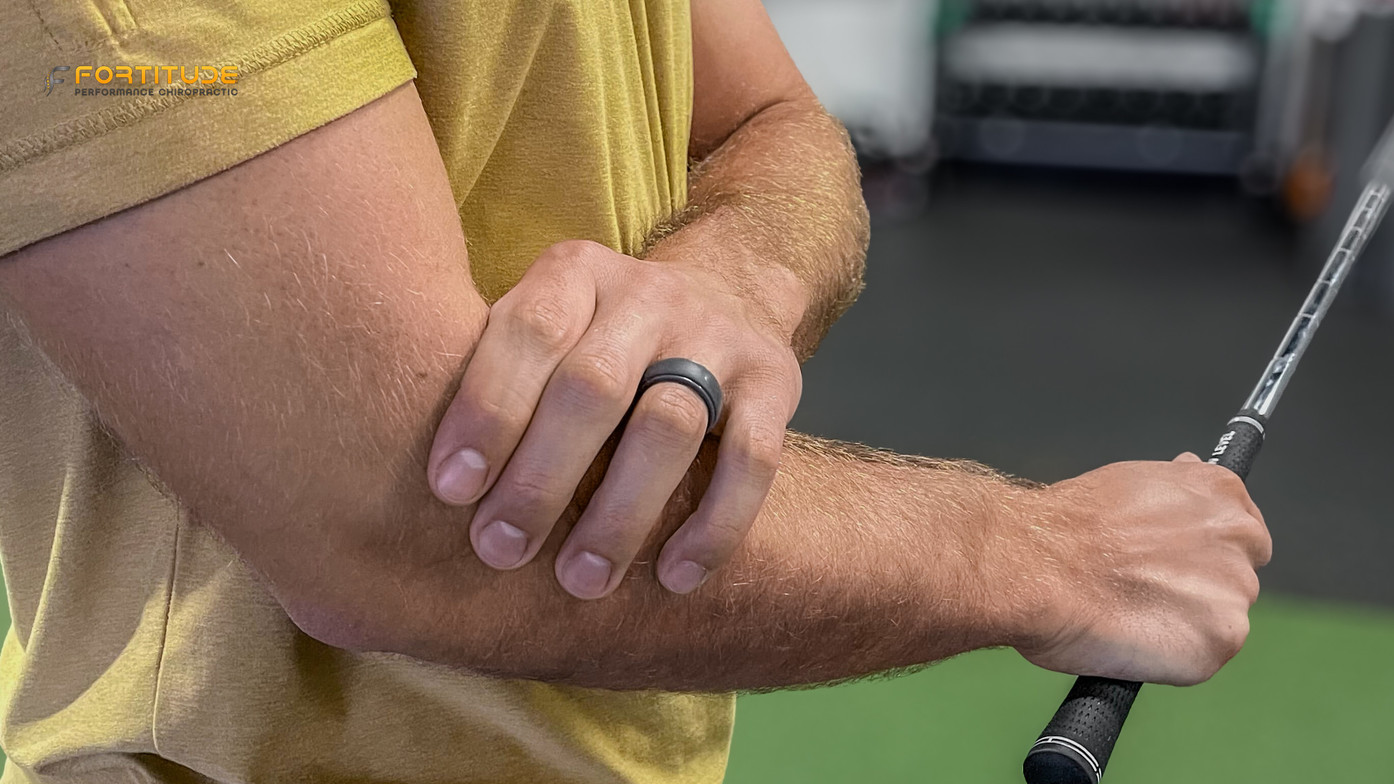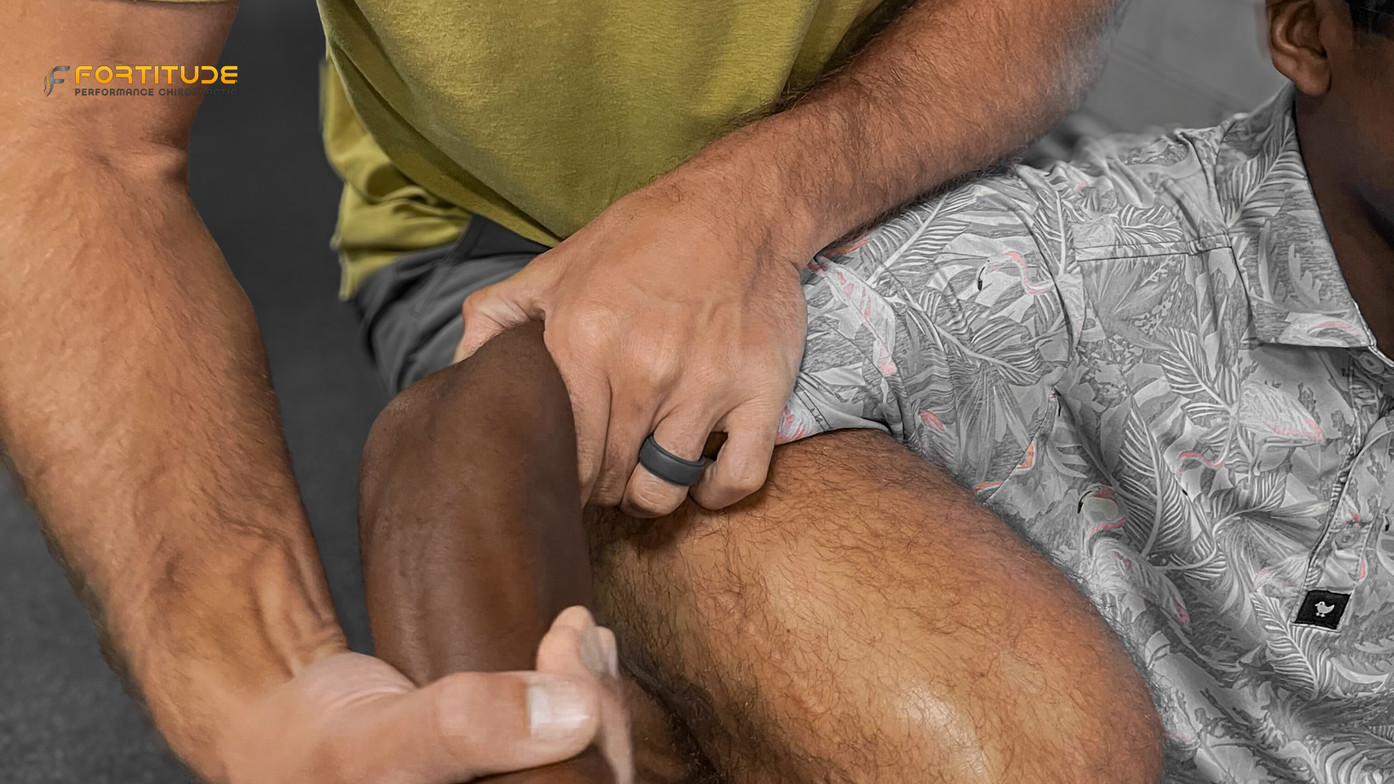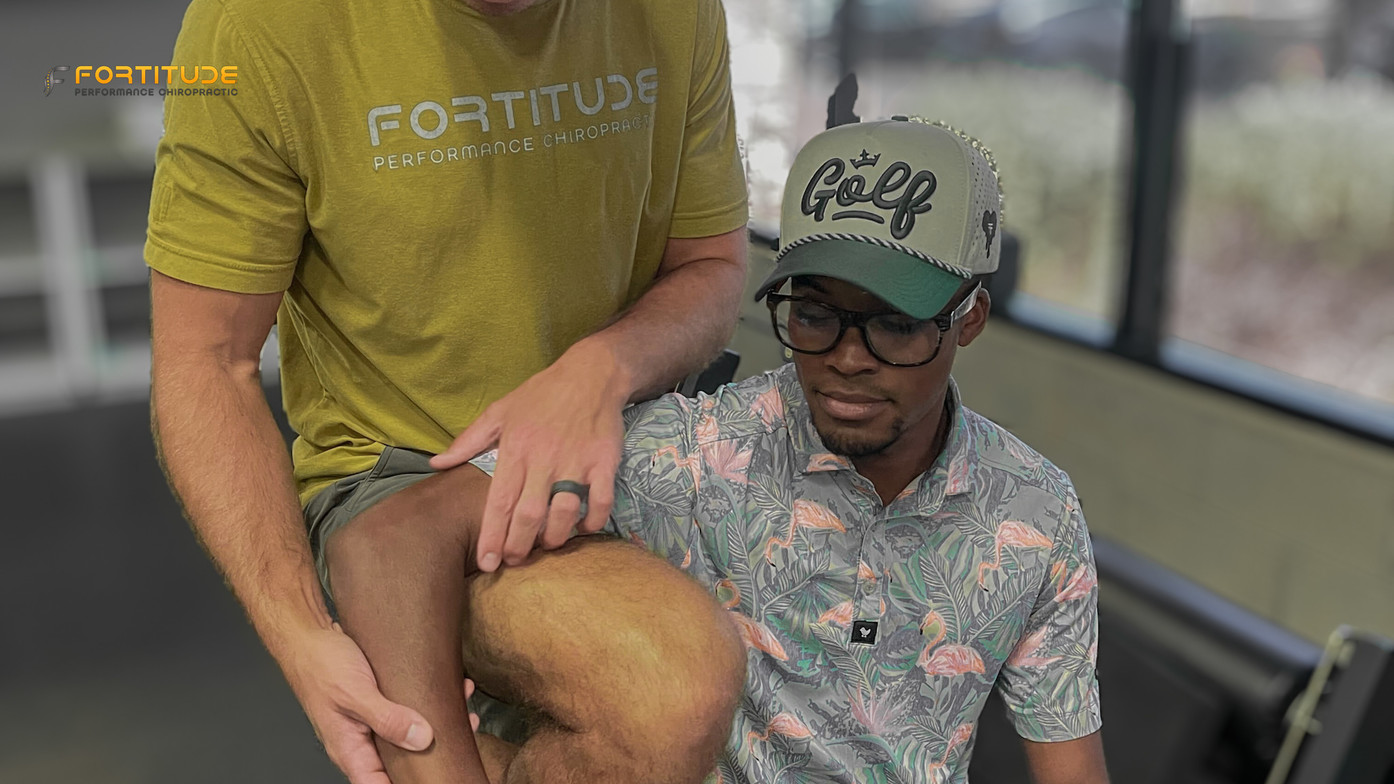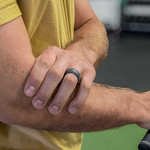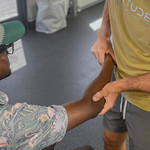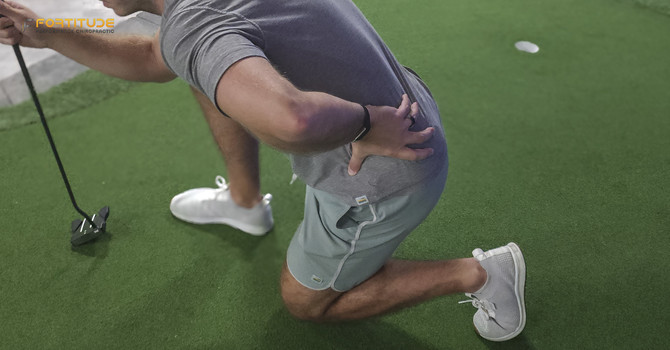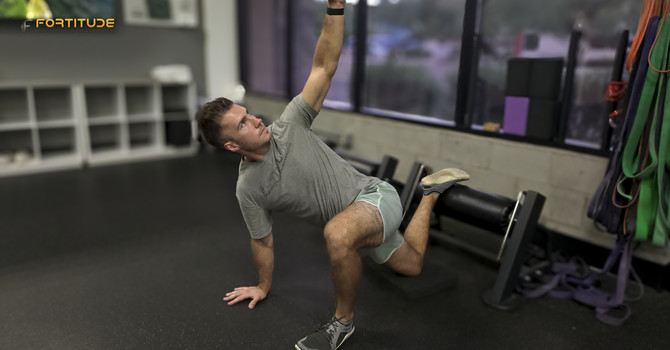How to Fix Golfer's Elbow
(And Why It Keeps Coming Back)
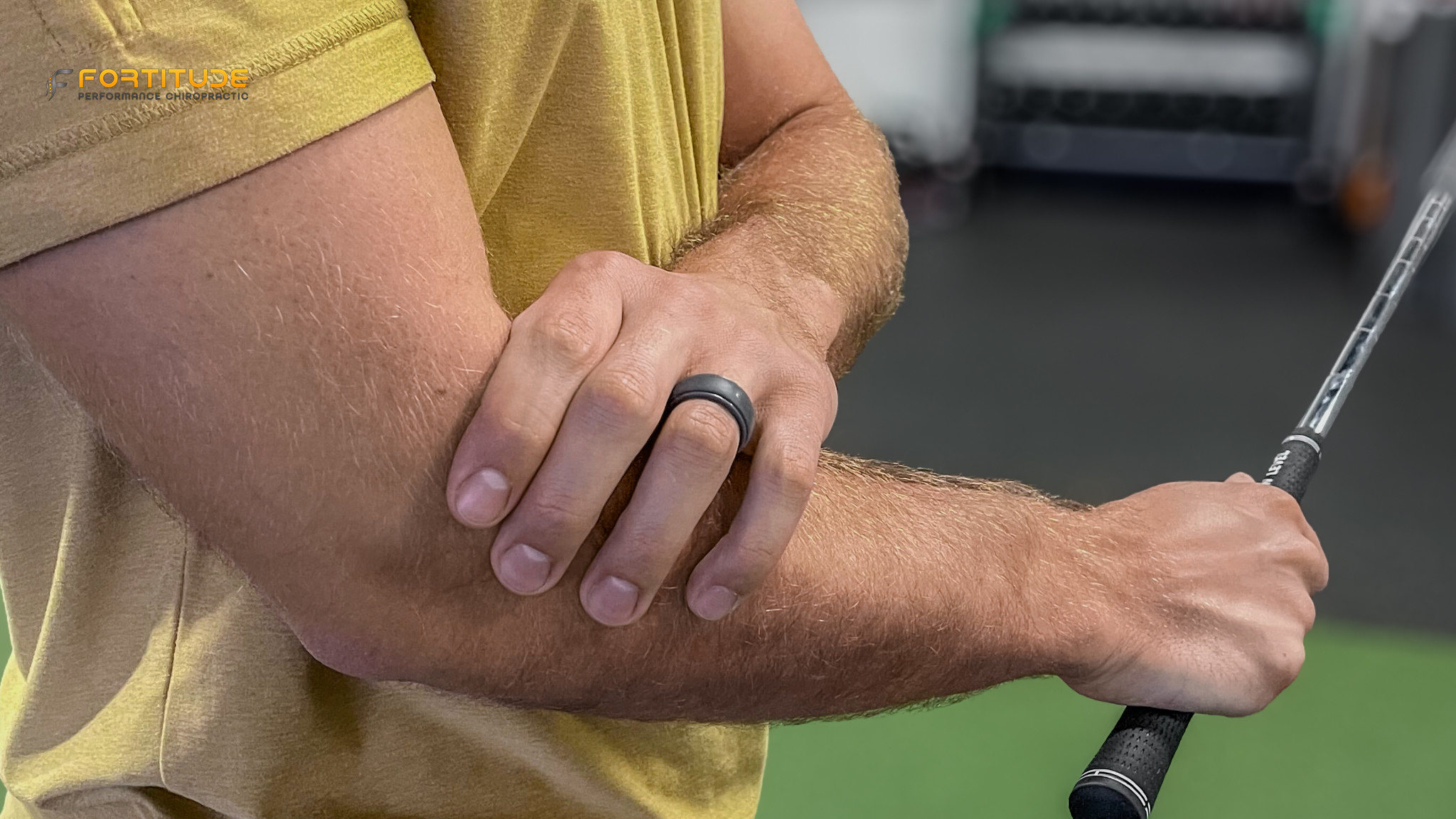
What Is Golfer’s Elbow? Causes, Symptoms, and How to Fix It for Good
Golfer’s elbow — also known as medial epicondylitis — is a common condition that causes pain on the inner side of your elbow. Despite its name, golfer’s elbow doesn’t just affect golfers. It can impact anyone who repeats gripping, lifting, or wrist-flexing motions — from weightlifters to office workers to weekend warriors.
If you’re dealing with that nagging, aching pain on the inside of your elbow, you’re not alone. And the good news? You don’t have to live with it.
In this guide, we’ll break down:
- What golfer’s elbow is and how to know if you have it
- Why it happens (even if you don’t play golf)
- The best golfer’s elbow rehab exercises to relieve pain and rebuild strength
- Proven treatment options that go beyond rest and ice
- Prevention tips to protect your elbows and avoid reinjury
Whether you’re an athlete, a golfer, or just someone tired of elbow pain, this guide will help you understand what’s going on — and what it really takes to fix it for good.
What is Golfer’s Elbow (Medial Epicondylitis)?
Golfer’s elbow is a type of tendonitis that causes pain where the tendons of your forearm muscles attach to the bony bump on the inside of your elbow. In medical terms, it’s known as medial epicondylitis. The pain typically centers at the inner elbow (on the side closest to your body), and it may radiate down the inner forearm toward the wrist.
At our clinic, we see golfer’s elbow all the time — and surprisingly, it’s often not from golf.
Many of our patients come in with elbow pain triggered by lifting weights, repetitive gripping, working at a desk, or even holding kids for long periods. One patient assumed it started from swinging a golf club, but after a movement assessment, we discovered the real issue was shoulder instability and poor wrist control during workouts and daily tasks.
Despite the name, you don’t have to be a golfer to get golfer’s elbow. Any repetitive use of the forearm muscles — especially when gripping, lifting, or throwing — can overload the tendons and lead to irritation. That includes athletes, manual laborers, gym-goers, and even desk workers.
Symptoms and How it Affects You
The most common signs of golfer’s elbow are:
- Pain on the inside of your elbow
- Stiffness when you try to move your arm
- A weak grip (hard to hold things)
- Sometimes numbness or tingling in your fingers
At our office, people often tell us things like:
“My elbow feels really sore and tender — even picking up a water bottle hurts.”
“It feels like I hit it on something, and it’s not getting better.”
“I keep rubbing the area because it feels tight and swollen.”
Golfer’s elbow can make it hard to do simple things like open a jar, carry your bag, or play sports. If you don’t treat it, the pain can last a long time and get in the way of your workouts, your game, or your daily life.

Best Ways to Help Golfer’s Elbow
Here’s how we help people at FPC heal golfer’s elbow, and stop it from coming back:
- Give Your Elbow a Little Break, if something hurts, try to stop doing it for a little while. You don’t need full rest, but you do need to stop doing things that keep irritating your elbow. While your elbow gets a short break, it’s really important to get checked by someone who can help teach your tendon how to handle movement again. If you skip this step, the pain will come right back when you try to do the same things again.
- Ice First, Then Use Heat Later, at the start, ice can help calm things down. Later, using heat can help relax tight muscles and bring blood to the area to help it heal.
- Try Dry Needling, dry needling helps release tight muscles and reset the area quickly. We use it all the time to help with elbow pain (Check out our blog on how it works)
- Get Stronger With the Right Exercises, strength training for your hand, wrist, and forearm is key, but it has to be the right kind of strength work, and in the right order. We teach this step-by-step at FPC so your elbow can handle more without hurting again.
- Check the Areas Around Your Elbow, your elbow may hurt, but the real problem could be coming from somewhere else. We always look at how your shoulder, wrist, neck, and upper back are working too, especially for athletes and golfers. When one part isn’t moving well, your elbow works too hard to make up for it.
- Get Chiropractic Care for Athletes and Golfers, at Fortitude Performance Chiropractic, we work with active people every day. We don’t just chase the pain, we figure out why it’s there. Then we use adjustments, dry needling, soft tissue work, and strength exercises to fix the real problem and make sure it doesn’t keep coming back.
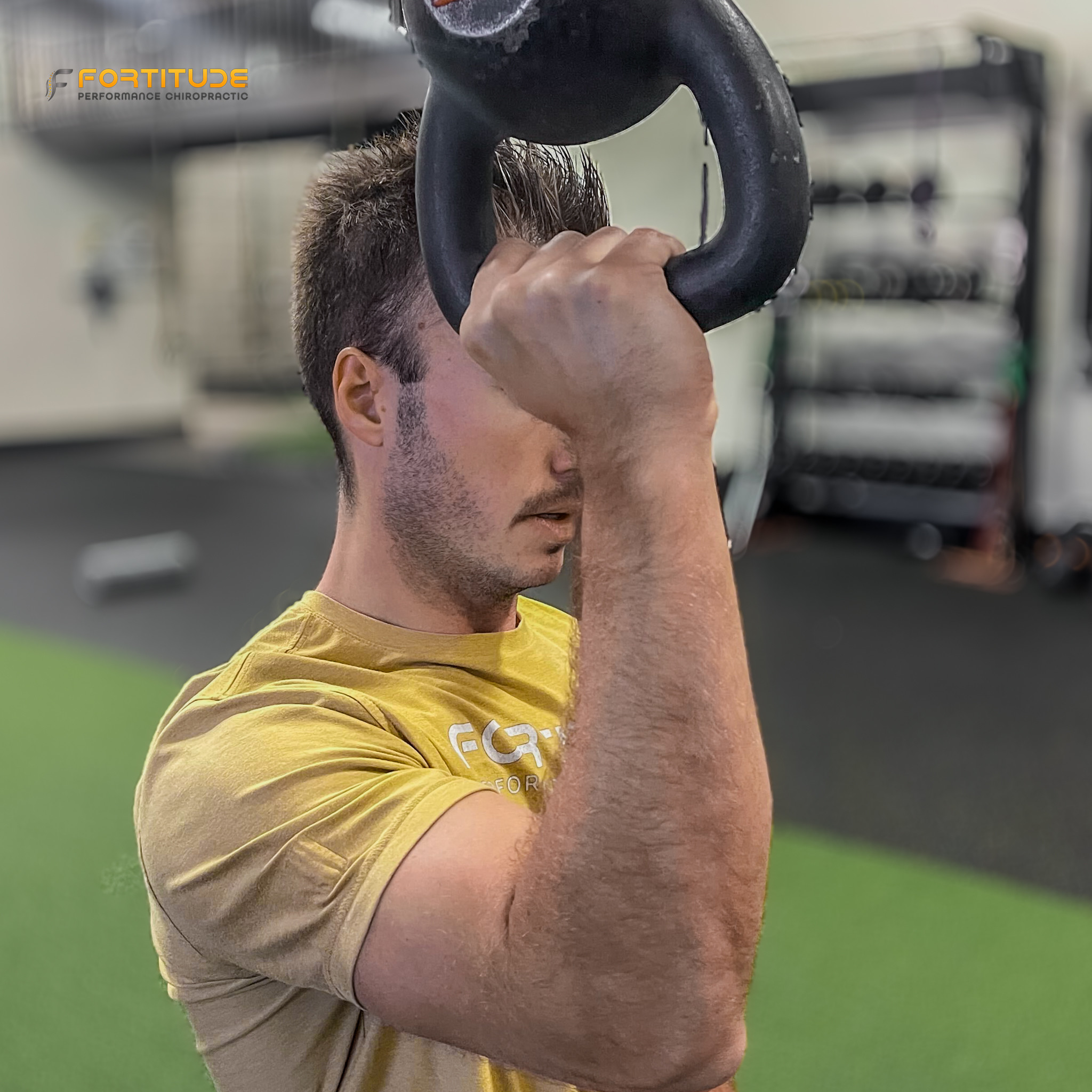
5 Best Exercises to Help Golfer’s Elbow Feel Better
These are some of our favorite exercises we use at FPC to help people get stronger and feel better. Each one is safe to do if it doesn’t make your pain worse. Go slow and focus on how your body feels.
- Heavy Carry (Isometric Hold). Hold a heavy weight at your side and walk slowly. Your arm muscles have to stay tight the whole time — this helps build strength without moving too much. Try to hold until you feel tired, but not too painful.
- Upside-Down Kettlebell Hold (Half-Kneeling). Kneel on one knee and hold a kettlebell upside down in front of you. This works your grip, wrist, shoulder, and core — all at the same time!
- Kettlebell Rotations. Hold a light kettlebell and slowly turn your forearm side to side. Go slow and stay in control. This helps your elbow get stronger through movement.
- Slow Wrist Lowering (Eccentrics). Rest your forearm on your leg, hold a small weight, and slowly lower your wrist down. Then help it back up with your other hand. Go slow — the lowering part is where your muscles get stronger!
- Dead Hang. Grab a pull-up bar and just hang there. Let your body relax while your hands and arms hold on. This helps build grip strength and gives your shoulders a nice stretch too.
Important: Always check with a professional to make sure these are right for you. If anything hurts too much, stop and ask for help. We use these at Fortitude Performance Chiropractic after doing a full assessment to make sure they’re safe and helpful for each person.

Dr. Molly’s Pro Tip:
When we coach patients through these, the biggest thing we focus on is going slow and staying in control. Most people want to rush — but that’s when the wrong muscles take over. We always say:
“If you go fast, you’ll miss the good stuff.”Focus on feeling the muscles work, keeping your wrist strong and your shoulder stable. It’s not about how heavy the weight is — it’s about doing it right.
Not sure if you're doing them right?
We’re happy to walk you through them and make sure you’re getting the most out of every rep.
Book a visit with our team and let’s make sure you’re on the right path.
Getting Back to Golf and Sports the Right Way
Once your elbow starts to feel better, it’s important to return to activity the right way, not just jump back in and hope for the best.
Here’s what we do at FPC:
- Go slow when adding things back in — like golf swings, lifting, or grip-heavy exercises.
- Check how the rest of your body moves — especially your shoulder, wrist, and mid-back. These areas often cause your elbow to work too hard without you even knowing it.
- Use a Golf Movement Assessment to catch small problems in your swing or setup that could be putting too much stress on your elbow.
But the biggest key?
Find out why your elbow hurt in the first place.
If you don’t get to the real reason it started, the pain will likely come back. That’s why we never give out cookie-cutter plans or generic stretches.
We build a plan that’s just for you — based on how your body moves and what your goals are. That way, you can get back to doing what you love with confidence.
Guessing can make things worse.
Getting the right help makes all the difference.
Internal Treatment Spotlight: Dry Needling & Chiro Care
At Fortitude Performance Chiropractic, we often use dry needling and chiropractic care together to help with golfer’s elbow.
- Dry needling helps release deep muscle tension and brings blood flow to the area so your body can heal.
- Chiropractic adjustments help your joints move better — especially in your elbow, shoulder, and upper back — which takes pressure off the injured area.
Dr. Molly’s Note:
When someone comes in with golfer’s elbow, we usually dry needle the tight forearm muscles and sometimes the triceps if they’re guarding the joint. Afterward, most people say, “It finally feels like something let go.” They often notice better movement right away, and less pain when they grip or lift.But here’s the most important part:
We don’t stop at pain relief.
To get long-term results, we always include rehab exercises that build strength, improve control, and teach your body how to move better. That’s how we make sure the problem doesn’t just go away temporarily — it stays gone.
Robin’s Story:
"I had dealt with elbow pain for months — nothing really helped. I thought it was just part of getting older and playing golf. But after working with FPC, the pain is gone. The dry needling, the movement work, the strength plan — it all just made sense. I’m golfing pain-free and actually hitting better than before."
Curious about how dry needling works?
Read our full blog on dry needling here.
Preventing Golfer’s Elbow in the Future
If you want to avoid elbow pain down the road, it starts with being smart about how you move and train. Here are some of the most effective ways to prevent golfer’s elbow from coming back:
Warm up properly before golf, lifting, or any grip-heavy activity. A few minutes of focused movement goes a long way.
Strengthen your forearms — both the muscles that flex and extend the wrist — so your tendons can handle more load.
Practice good form in the gym, on the course, and in everyday movement. Poor mechanics lead to compensation.
Avoid big jumps in activity. Slowly increase your volume and intensity over time, not all at once.
Pay attention to early signs of tightness, soreness, or weakness — and don’t push through them.
Big picture:
Most elbow pain doesn’t start at the elbow. We often see it as a result of poor shoulder stability or weak grip strength. When those areas aren't doing their job, the elbow ends up taking on too much — and that’s when pain shows up.
Focusing on full-body strength and movement control is the best long-term insurance policy for your elbows.
Golfer’s Elbow FAQs
1. How long does it take to heal?
Most mild to moderate cases improve in about 4–6 weeks — if they’re treated early. If left alone or ignored, it can take much longer.
2. Should I use ice or heat?
Use ice in the early stages to reduce pain and swelling. Later on, heat can help relax tight muscles and improve blood flow.
3. Can I still work out or play golf?
In many cases, yes — but only with the right plan. You can usually continue training, lifting, and even golfing if you have proper guidance from a professional. Doing it the wrong way can make things worse.
4. What’s the difference between golfer’s elbow and tennis elbow?
- Golfer’s elbow causes pain on the inside of the elbow.
- Tennis elbow causes pain on the outside of the elbow.
5. When should I see a doctor or get help?
If your pain lasts more than 1–2 weeks or starts to get worse, it’s time to get checked. Early care can prevent long-term problems and get you back to doing what you love faster.
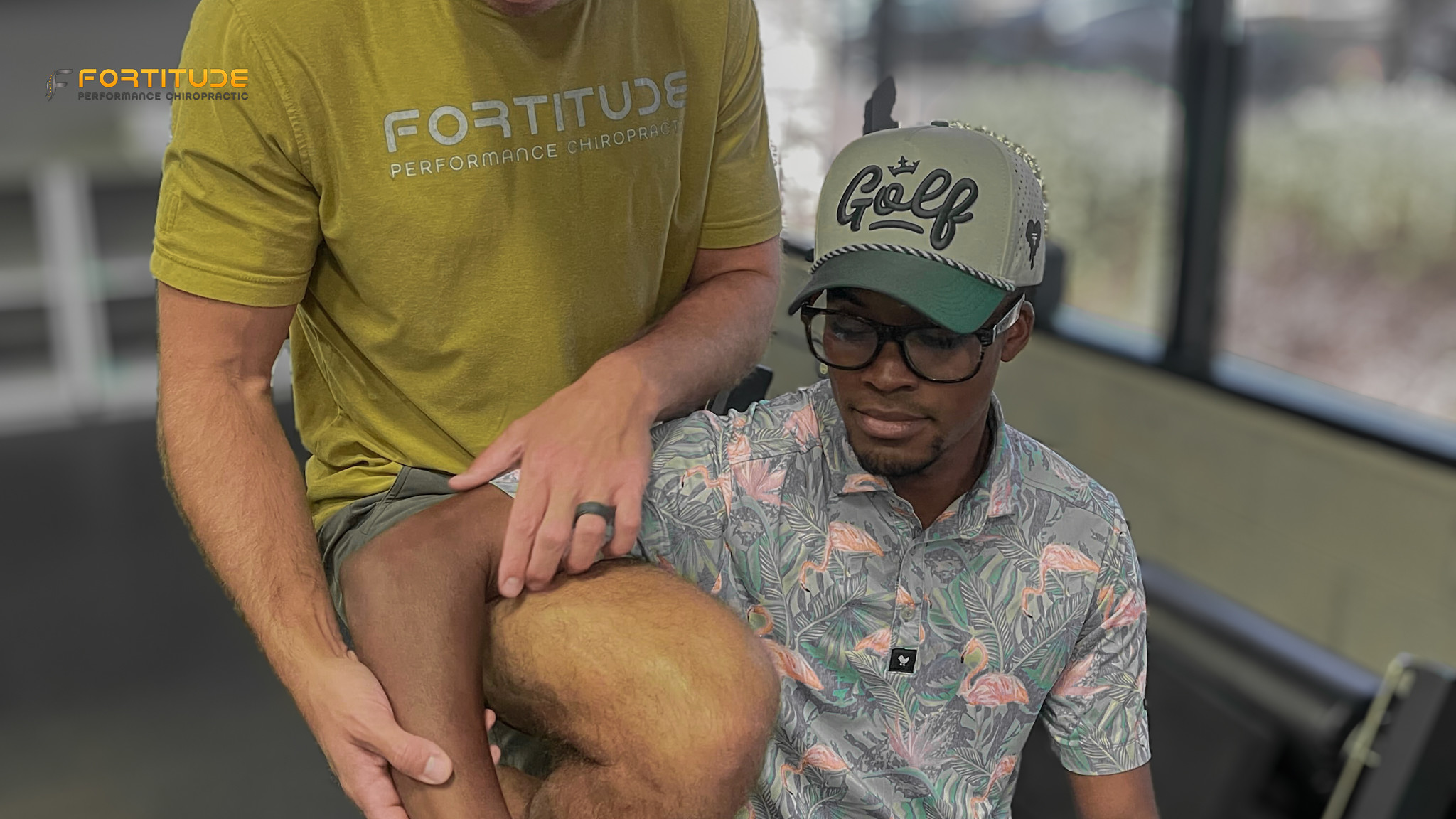
Our Approach: Chiropractic + Rehab + Golf-Specific Movement
At Fortitude, we take a people-first, performance-based approach to care.
We don’t just treat the pain — we figure out why it started, and what your body needs to move better, feel stronger, and stay in the game for the long haul.
Here’s what makes our care different:
- Real 1-on-1 time with a doctor who listens and creates a plan around you
- Full-body movement assessments that go beyond just your elbow to find what’s actually driving the problem
- Custom rehab plans that build strength, mobility, and confidence — so you’re not just feeling better, you’re playing better
Because here’s the truth:
If your elbow pain is already getting in the way of your swing, it’s not going to fix itself.
Most people wait too long — and by the time they seek help, they’ve lost distance, control, and trust in their body.
Don’t let that be you.
[Click here to book a Discovery Call]
Let’s figure out what’s going on and build a plan that gets you back to playing strong, pain-free, and with confidence.
Or follow us on Instagram @phx_fortitude for golf rehab tips and behind-the-scenes content from our clinic.
Related Posts You Might Like

Fortitude Performance Chiropractic
Contact Me
